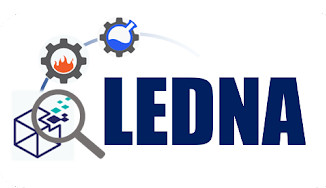Vertically aligned carbon nanotubes based materials for High Energy Hybrid UltraCAPacitors
As part of the ASTRID program, the H2E-CAP project aimed to develop innovative electrode materials based on vertically aligned carbon nanotubes (VACNT) for inclusion in supercapacitors. The materials offered are different from the materials currently used in commercial products (activated carbons) in order to meet the demand for better energy and power density in energy storage devices.
The scientific and technical advances of the H2E-CAP project first allowed the development of direct growth of VACNT on flexible Al supports by lowering the growth temperature (patent licensed to the start-up NAWATechnologies)[1]. The formation rates of CNTs are at the level of the world state of the art and the very small diameters measured associated with the high nanotube densities obtained make it possible to achieve electrode capacitances much higher than those obtained on stainless steel for CNTs. alone. This major advance on the growth of dense VACNTs on low-cost metal substrates and of interest for use as a supercapacitor electrode has paved the way for the development of innovative VACNT/PCE and metal oxide combinations in the tasks in downstream of the project by adapting the conditions leading to a homogeneous deposit in the VACNT (2 patents). The most efficient VACNT modification routes lead to electrodes with high capacitances. These electrodes are intended for use in symmetrical and hybrid supercapacitor systems.
The successful demonstration of the feasibility of large-area development of certain combinations of materials up to industrial prototypes (up to 10*10 cm²) made it possible to achieve high levels of technological maturity (TRL>5). The scientific and technical success of this initial ANR ASTRID project encourages the H2E-CAP consortium, combining university laboratories and industrial partners, to continue efforts to develop and mature approaches (ASTRID Maturation, also fully funded by the DGA) which would constitute the starting point for the valorization of research and technologies of a dual nature resulting from H2E-CAP in the field of energy.
The ASTRID H2ECAP project is a fundamental research project coordinated by Mathieu Pinault (Researcher at CEA Saclay DRF/IRAMIS/NIMBE) involving partners from CY Cergy Paris University (LPPI Laboratory), the University of Tours (PCM2E Laboratory) and NAWATechnologies company. The project started in January 2014 and lasted 42 months.

[1] Nassoy et al., Nanomaterials 2019, 9, 1590 https://doi.org/10.3390/nano9111590




